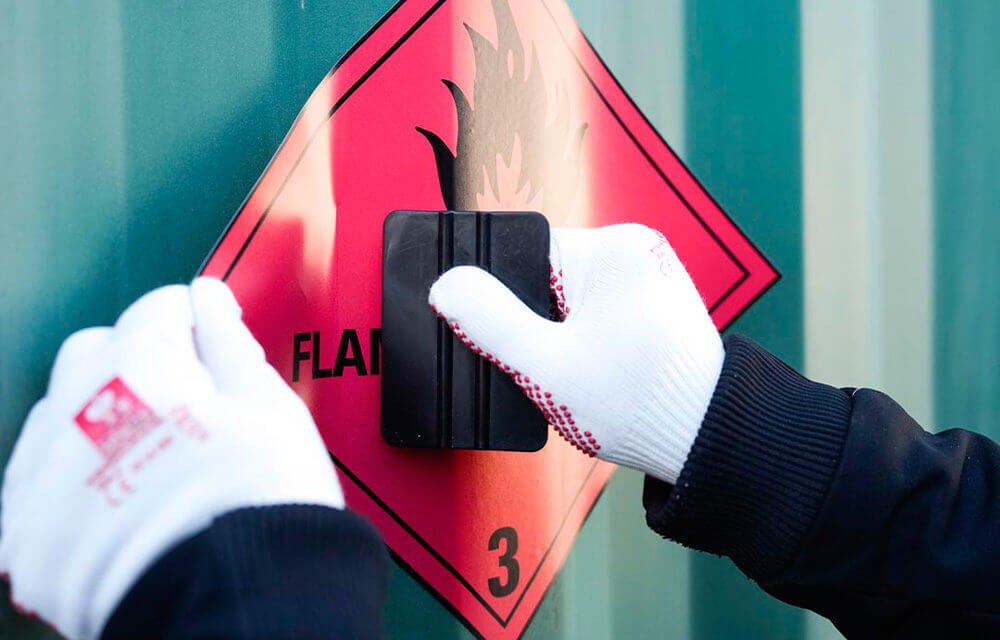Many companies working with and transporting hazardous materials find labels for hazardous materials to be a challenge which also adds to a feeling of insecurity. On the one hand, there are strict regulations for labelling a product. On the other hand, companies face a great logistic effort when it comes to storing and disposing of labels.
The usual market practice of setting a minimum purchase amount for labels in the four to five digit numbers poses a challenge to companies. If the labels are not all used up and their validity expires, their disposal creates another problem. If companies are able to order small amounts, this can save material and greatly contribute to saving resources.
This is exactly what Boxlab Services, a service provider and process consultant for hazard labels and packaging, and Herma thought and why they started a cooperation. Both companies offer labels, placards and hazard labels starting with a minimum purchase amount of one, and deliver them everywhere in Europe within 24 hours. According to both companies, this can cut the cost for sourcing and processing by up to 50 percent.


DIVISION OF LABOUR AMONG PARTNERS
The labels are delivered on single sheets or on rolls. Boxlab Services takes care of the operative business including orders, deliveries and packaging. The start-up also guarantees that the labels comply with applicable laws, takes back the silicon coated carrier material and reintroduces it into the recycling cycle.
Herma concentrates on choosing suitable combinations of materials, a process that needs several factors to be taken into consideration. On the one hand, the labels will be placed on different packagings and materials and must nevertheless not come lose. This is where the company benefits from their experience developing and ‑producing adhesive material for the chemical sector. On the other hand, depending on their use, the labels have to satisfy different requirements. This can mean resistance to chemicals like acids, alkaline solutions, solvents or dirt, grease and oil or to environmental conditions like heat, moisture, cold, UV exposure or resistance to sea water.
„“An appropriate choice of robust, flexible film for labels which can also be printed on, of adhesives that resist a broad range of temperatures and are suitable for different surfaces, and of fade-proof printing inks that, if necessary, comply with the requirements for sea water resistance according to the British Standard BS5609 Section 3, is very important.”
Mischa Feig, CEO Boxlab Services
INDIVIDUAL SOLUTIONS FOR INDIVIDUAL NEEDS
But not only the outside influences on labels during transport are broad. The surfaces to which the labels have to stick are just as unique.
“Hazard labels have to adhere firmly to very different containers like barrels, vats, canisters, containers, IBC, Big Bags, bottles, but also to pallets wrapped in plastic stretch film – and that means a multitude of different surface materials.”
Sven Pleier, Key Account Manager at Herma
The face of the label is also different from company to company. Boxlab Services therefore prints different motifs together on the same label. Safety is not only important for labelling goods. To keep users safe while they apply the labels, Boxlab Services accompanies the entire process.
“Many companies still don’t have a satisfying process for labelling hazardous materials. Which is why we are very happy that together with Herma we can now offer lasting safe and innovative solutions that have been thought through from the beginning, even for very small needs.”
Mischa Feig, CEO Boxlab Services
